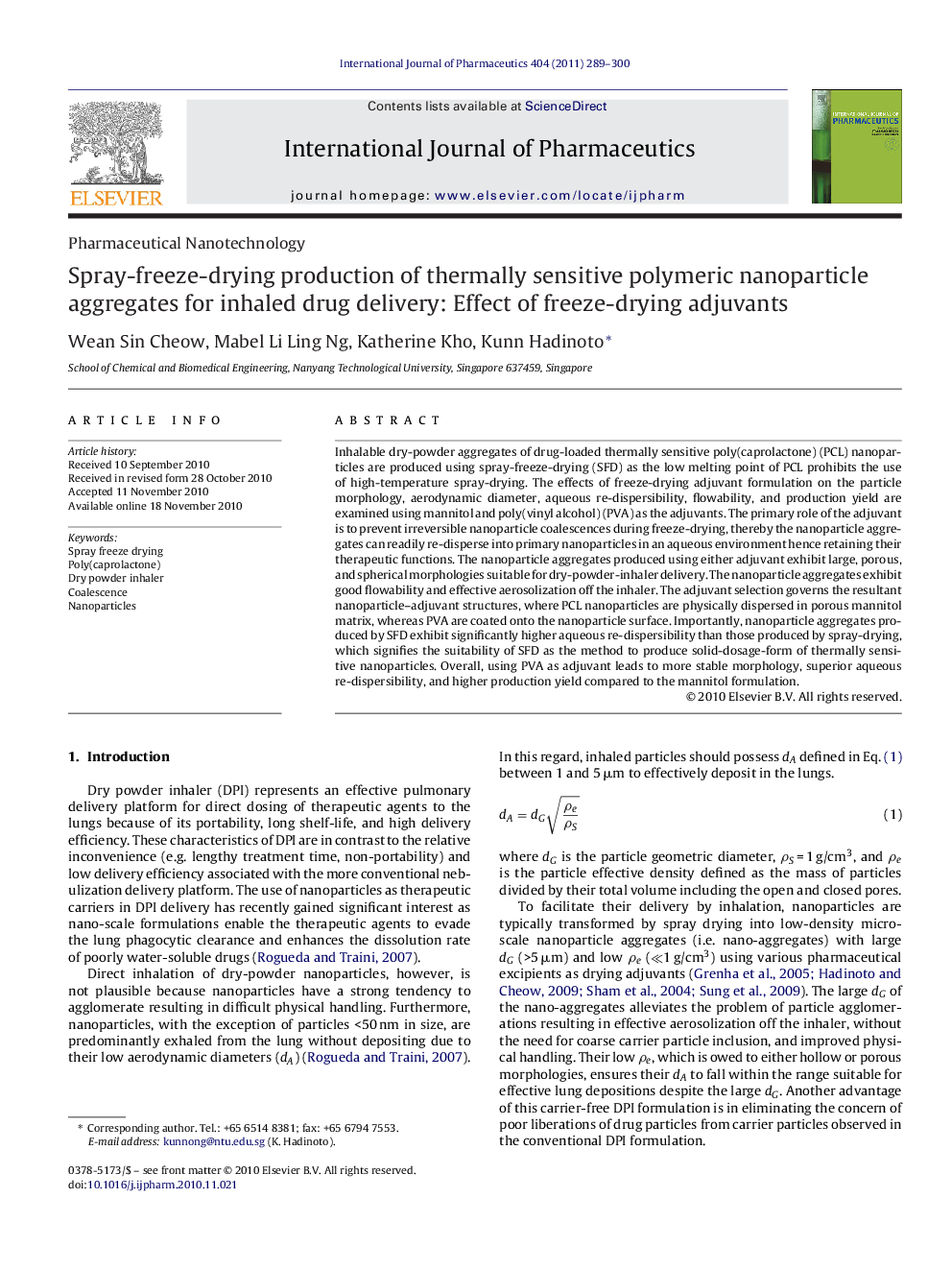| کد مقاله | کد نشریه | سال انتشار | مقاله انگلیسی | نسخه تمام متن |
|---|---|---|---|---|
| 5821302 | 1557438 | 2011 | 12 صفحه PDF | دانلود رایگان |

Inhalable dry-powder aggregates of drug-loaded thermally sensitive poly(caprolactone) (PCL) nanoparticles are produced using spray-freeze-drying (SFD) as the low melting point of PCL prohibits the use of high-temperature spray-drying. The effects of freeze-drying adjuvant formulation on the particle morphology, aerodynamic diameter, aqueous re-dispersibility, flowability, and production yield are examined using mannitol and poly(vinyl alcohol) (PVA) as the adjuvants. The primary role of the adjuvant is to prevent irreversible nanoparticle coalescences during freeze-drying, thereby the nanoparticle aggregates can readily re-disperse into primary nanoparticles in an aqueous environment hence retaining their therapeutic functions. The nanoparticle aggregates produced using either adjuvant exhibit large, porous, and spherical morphologies suitable for dry-powder-inhaler delivery. The nanoparticle aggregates exhibit good flowability and effective aerosolization off the inhaler. The adjuvant selection governs the resultant nanoparticle-adjuvant structures, where PCL nanoparticles are physically dispersed in porous mannitol matrix, whereas PVA are coated onto the nanoparticle surface. Importantly, nanoparticle aggregates produced by SFD exhibit significantly higher aqueous re-dispersibility than those produced by spray-drying, which signifies the suitability of SFD as the method to produce solid-dosage-form of thermally sensitive nanoparticles. Overall, using PVA as adjuvant leads to more stable morphology, superior aqueous re-dispersibility, and higher production yield compared to the mannitol formulation.
Dry-powder aggregates of thermally sensitive polymeric nanoparticles are produced by spray-freeze-drying using mannitol and PVA as adjuvants to prevent irreversible nanoparticle coalescences. The nanoparticle aggregates possess large, spherical, and porous morphologies suitable for aerosolization delivery and can effectively reconstitute into primary nanoparticles upon exposure to an aqueous environment.89
Journal: International Journal of Pharmaceutics - Volume 404, Issues 1â2, 14 February 2011, Pages 289-300